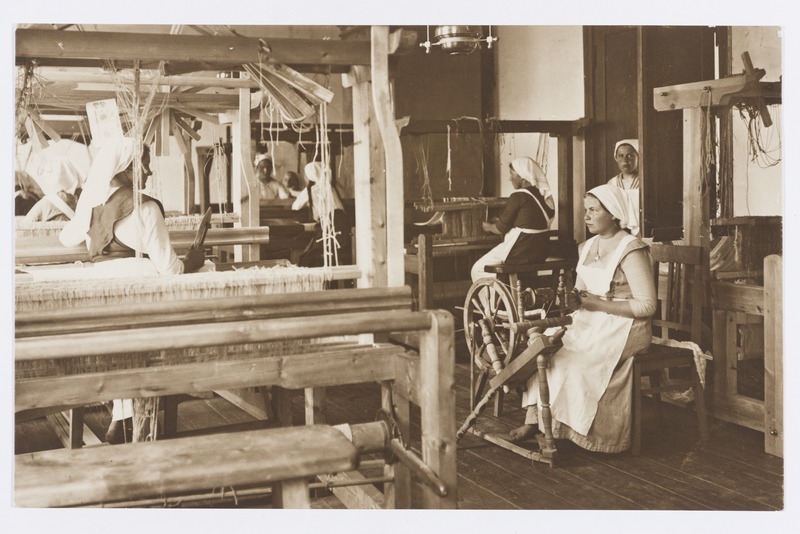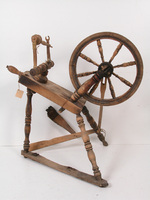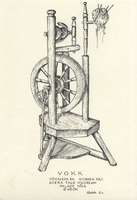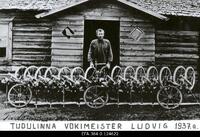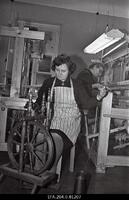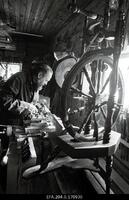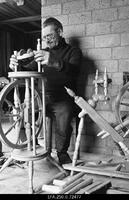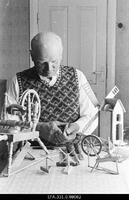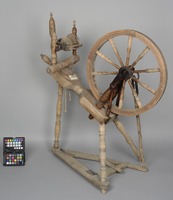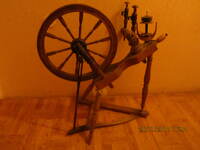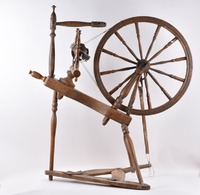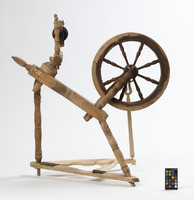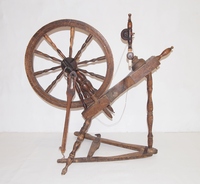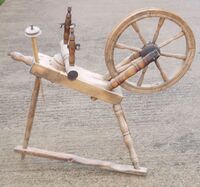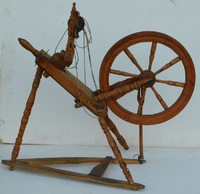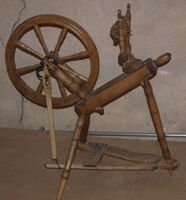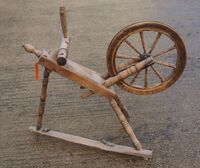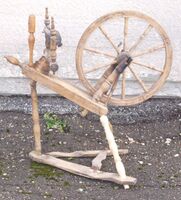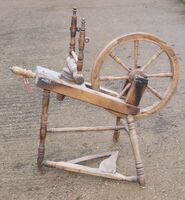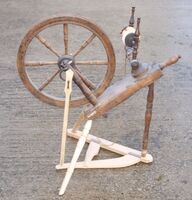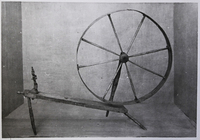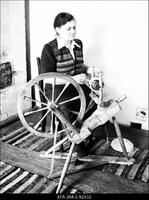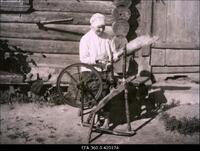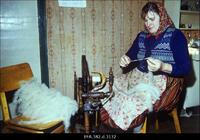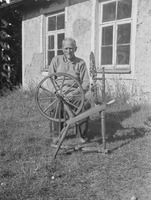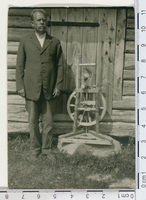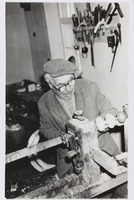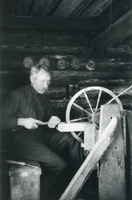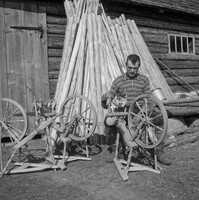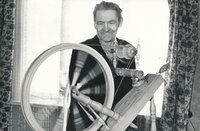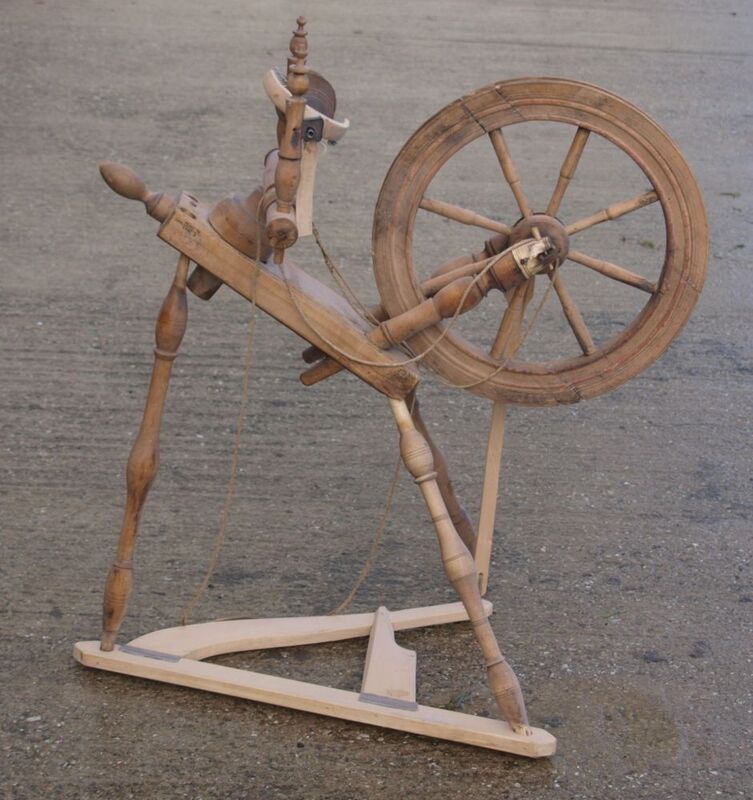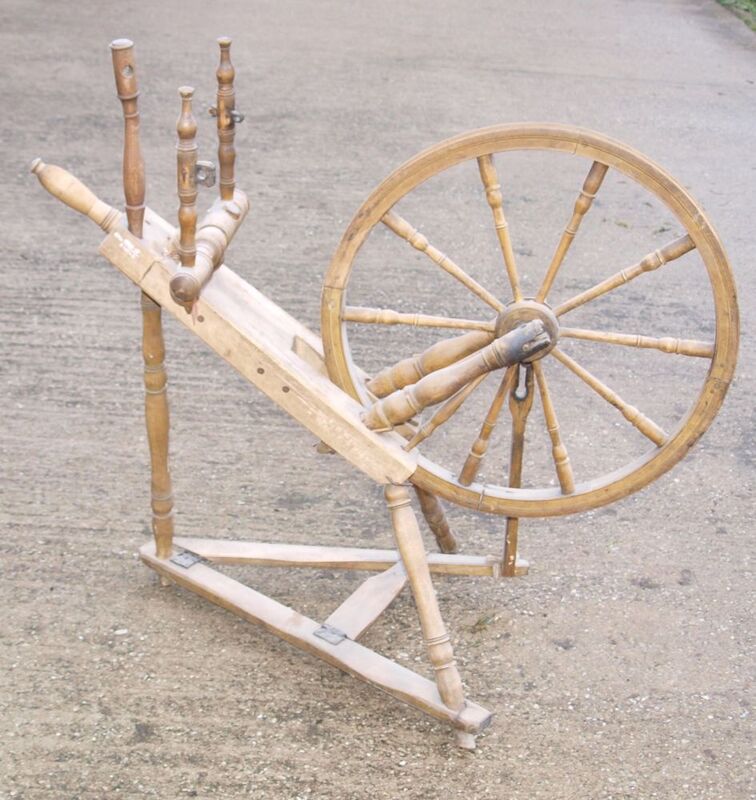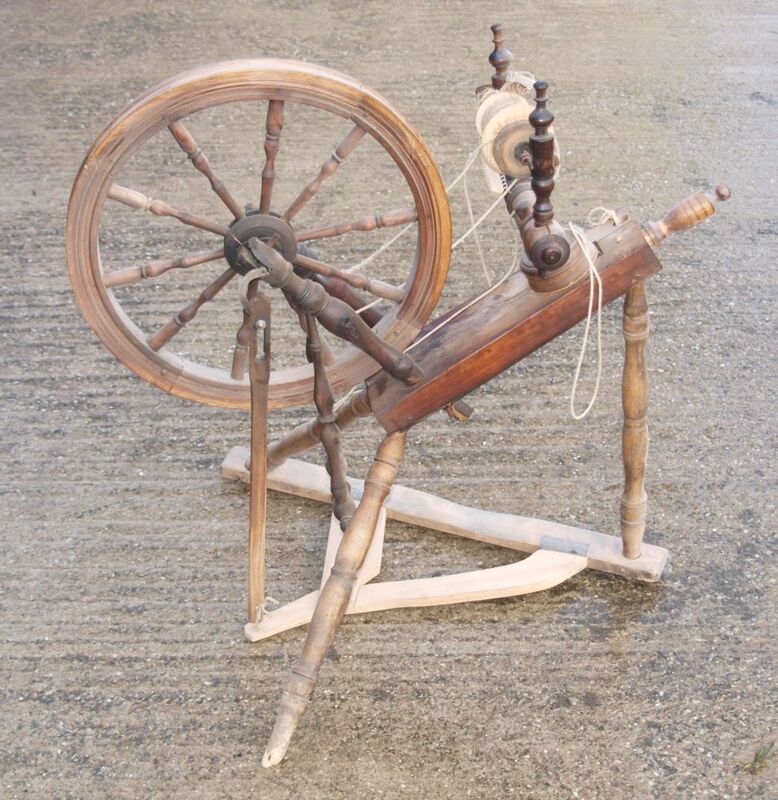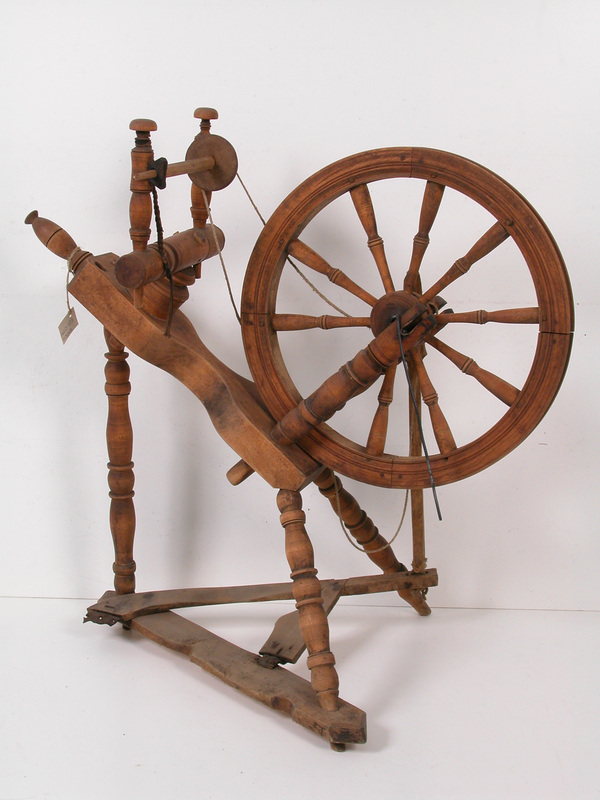Estonian spinning wheels are beautiful handmade tools with complex links to culture, history, and ecology.
The spinning wheel entangles natural materials and traditional practices. As a handcrafted object, it is an exuberant display of expertise and inspiration wrought in wood and metal. It is also an everyday tool used for handspinning: twisting fibers to make yarn and thread for textiles ranging from simple linens for the home to richly embroidered masterpieces of folk clothing. In handspinning, men’s and women’s traditional crafts come together to transform natural materials into cultural items used in the home and worn on the body.
A small country in northeastern Europe, Estonia is a place where heritage crafts thrive. Traditional knitting, weaving, embroidery, woodworking, construction, and metalworking are taught, practiced, and valued. However, handspinning is a less common practice. This exhibition shows the importance of the Estonian spinning wheel as a foundational tool of Estonian textile crafts and explores its beauty, the skills of spinning wheel makers, and its role in ecology and folklore.
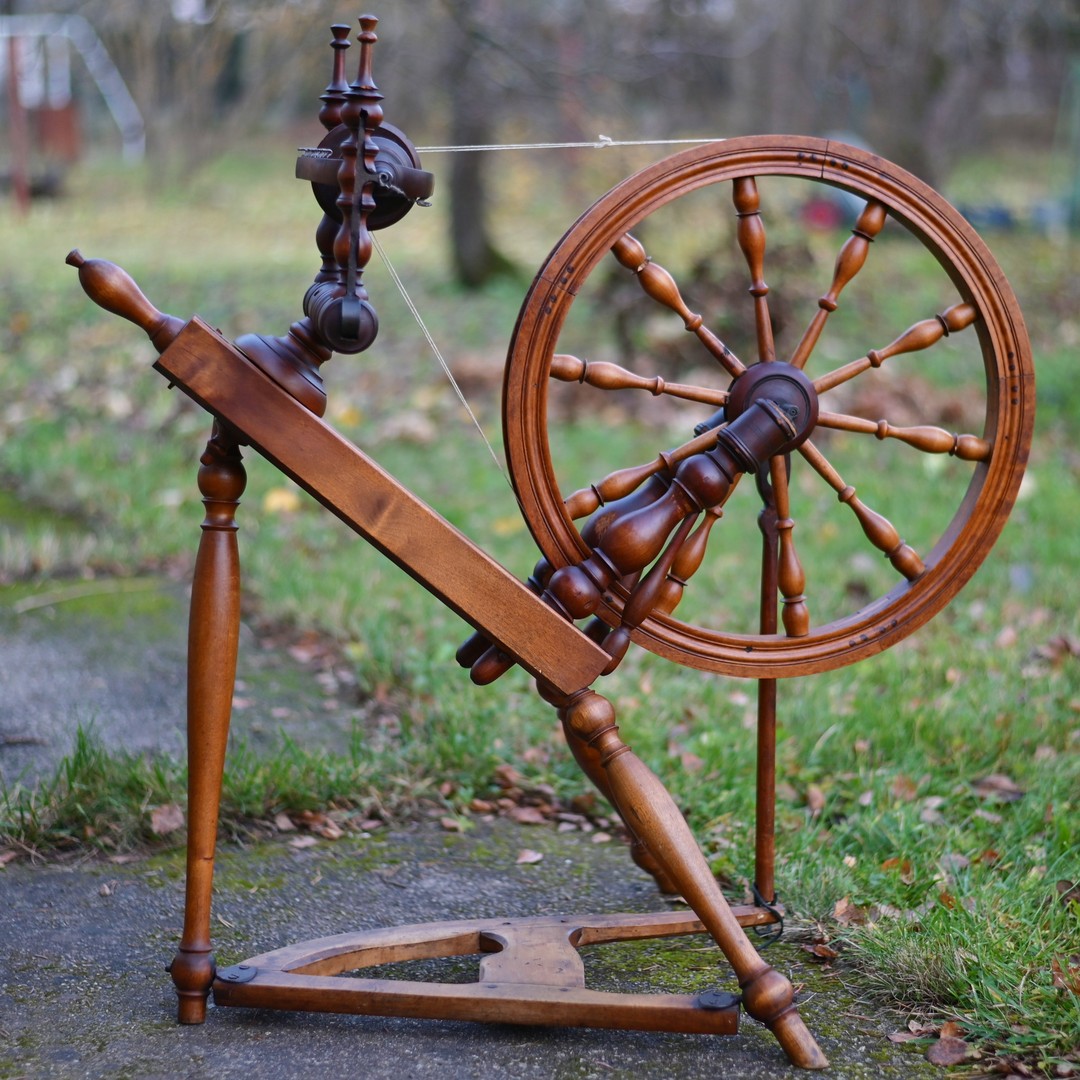
History
The flyer-and-bobbin spinning wheel (pictured above) appeared in Europe in the 16th century, and it was rapidly and widely adopted in Estonia for spinning flax, hemp, and wool. Until the late 19th century, most Estonians were farmers and lived under the control of Baltic German elites in a feudal system, so many rural practices were robust until the 20th century and even up to World War II. Handspinning on the spinning wheel was common practice at least until the 1940s, and some people continue to do it today, although now usually by choice rather than necessity. Spinning wheels used in Estonia were often made locally either at home or by professional spinning wheel makers who formed a lively cottage industry and marketed their creations all over Estonia and in parts of Russia.
Estonian spinning wheel makers rarely marked their products, so it can be difficult to determine exactly how old a spinning wheel is or where it was made. However, the spinning wheels in Estonian museum collections today are likely to be from the early 1800s to the 1990s, with most produced from the mid-1800s to the late 1930s. Some south Estonian spinning wheels may have been made in northern Latvia and sold in regional markets, but many of the spinning wheels in museum collections have reliable records that connect them to Estonian makers. It is common to be able to trace them to the exact farm where they were used and sometimes also made.
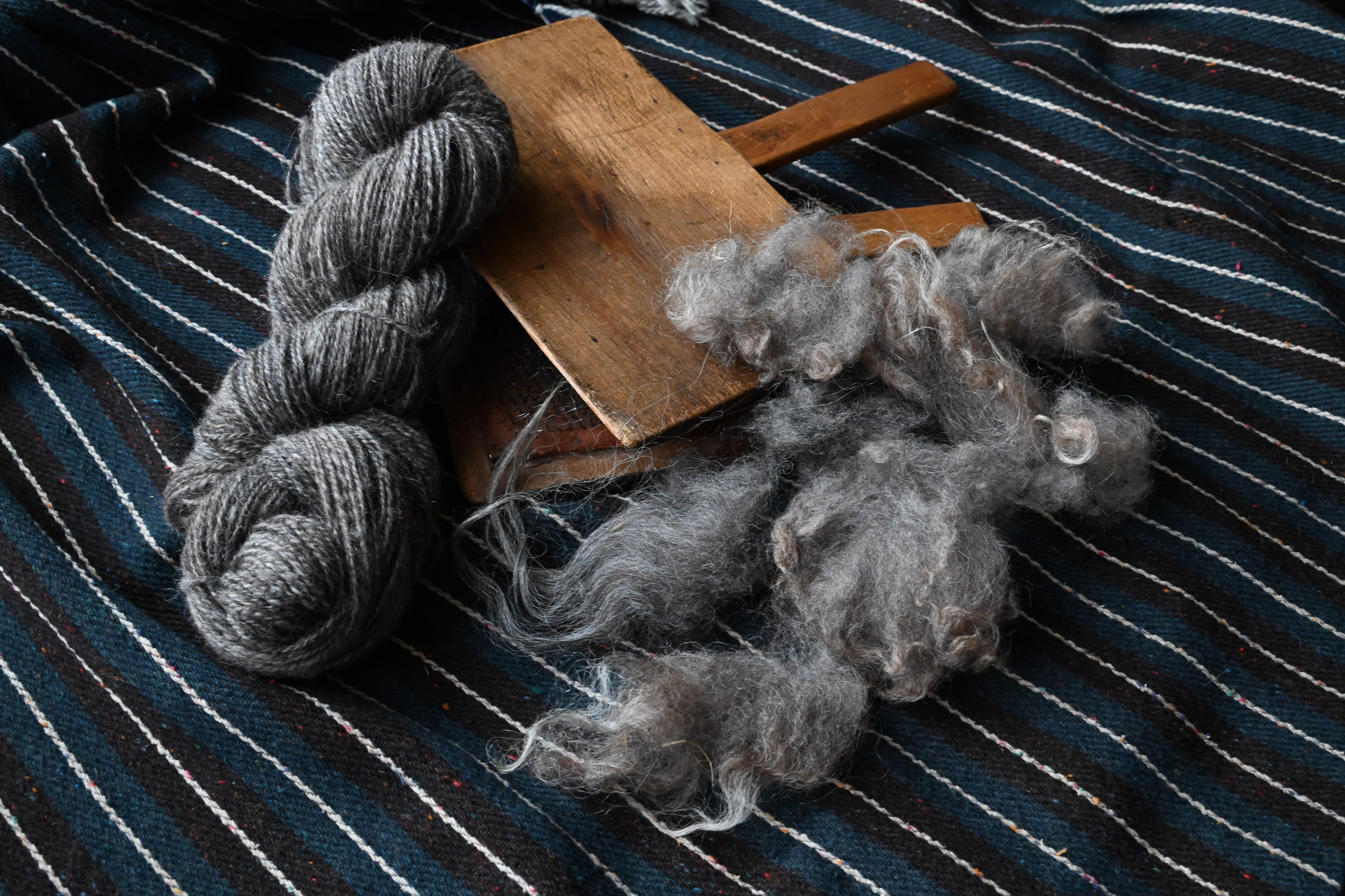
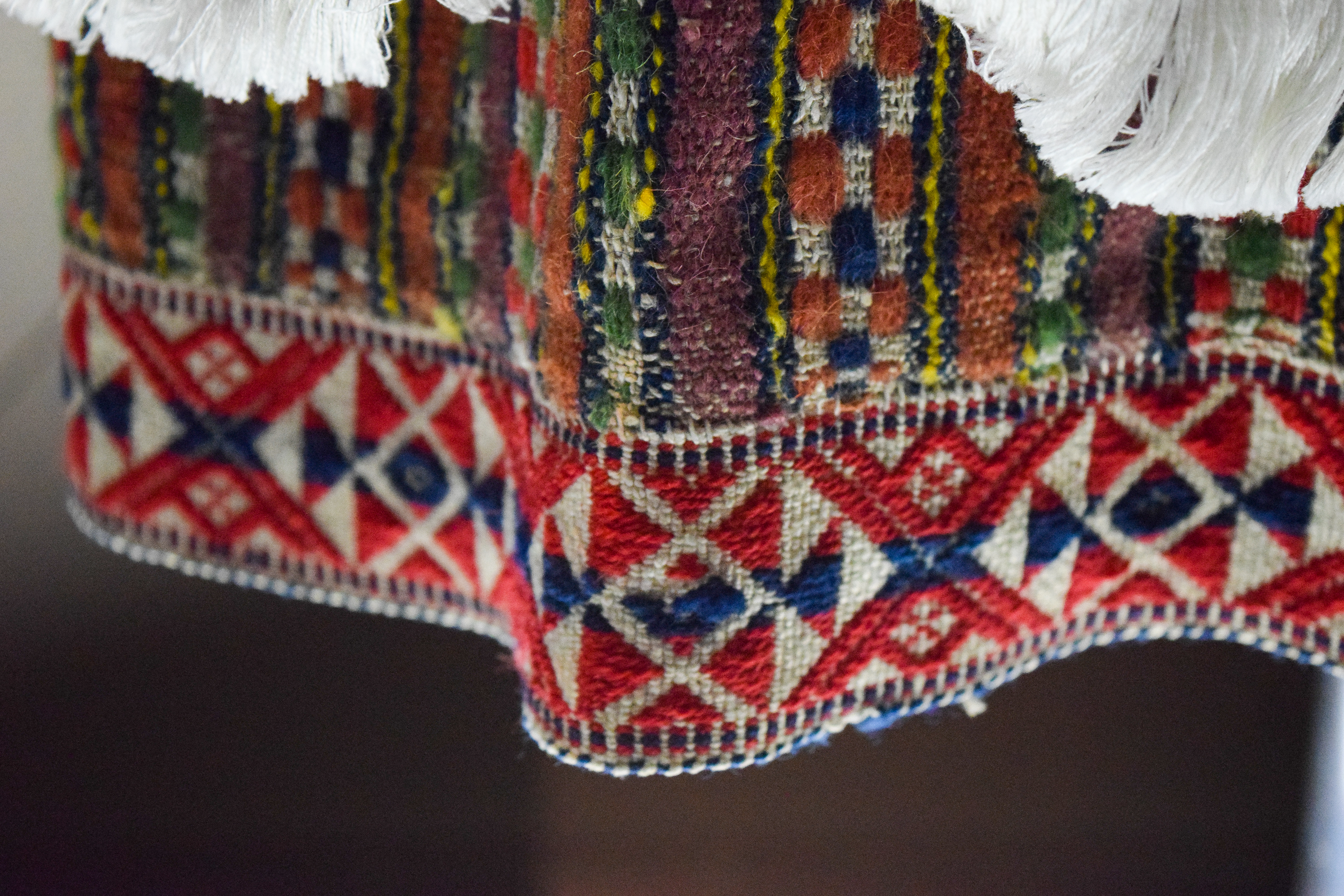
The Collection
This exhibition utilizes a digital collection of over 150 items from Estonian museums, archives, and personal collections. They include physical objects, photographs, films, and ethnographic drawings. The entire collection is available to browse. Newly digitized items continue to be added, and the collection is currently being plotted on the interactive map below.
The Exhibition
In addition to physical objects in museum collections, this exhibition draws from a set of over 200 questionnaire responses about spinning and spinning wheels from the late 1930s and early 1940s. These show that even though commercial yarn and thread were widely available, spinning was still practiced, and many families owned and used a spinning wheel at least until World War II.
Today, Estonian spinning wheels can be found in outbuildings, attics, and barns, and it is rare for them to be in active use in the home. They frequently appear on auction sites for sale, and imported antique spinning wheels from Sweden and Finland are common in thrift shops. The following pages will highlight the beauty of these handmade tools and show their cultural and practical value as handmade objects and tools for creation.

